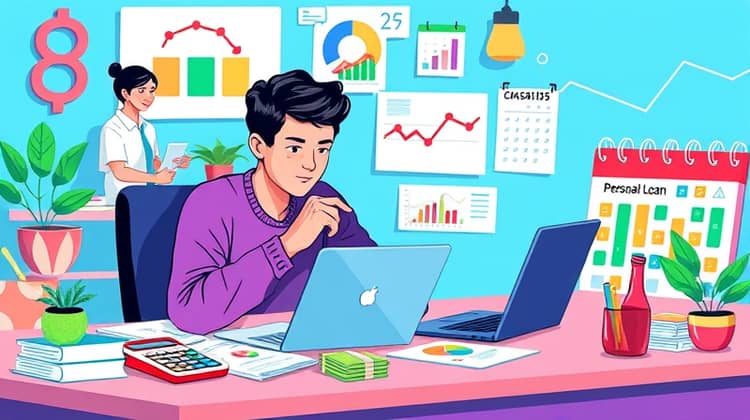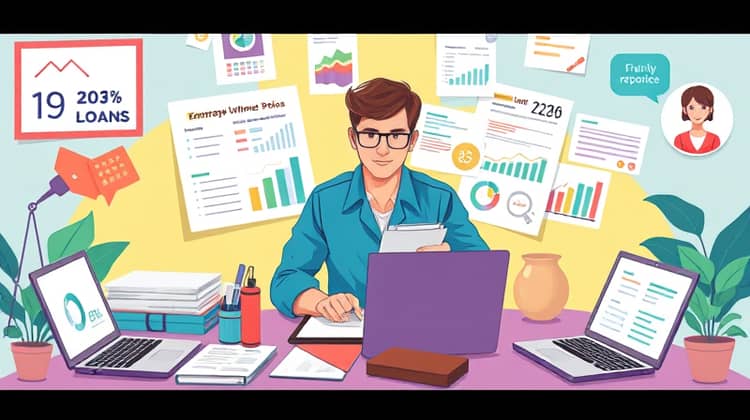Personal loans can serve as an essential financial tool for people in various situations, allowing consumers to borrow money for immediate needs or larger expenses. The flexibility and accessibility of personal loans make them an appealing choice compared to other financial solutions.
Due to their widespread availability and less stringent approval criteria, personal loans have increasingly gained popularity among individuals seeking financial assistance. However, it is crucial for borrowers to understand the key aspects of personal loans to make informed decisions.
In this article, we provide a comprehensive overview of personal loans, including what they are, how they work, and factors to consider when choosing the right loan for your needs.
What is a Personal Loan?

A personal loan is a form of unsecured credit that allows individuals to borrow a fixed amount of money from lenders to use for various purposes, such as consolidating debt, funding a major purchase, or covering unexpected expenses. Personal loans usually come with fixed interest rates and monthly repayments.
These loans can be obtained from traditional banks, credit unions or online lenders, with varying terms ranging from a few months to several years. Because they are relatively easy to access and often have lower interest rates than credit cards, they are a popular choice for many borrowers.
It's important to note that personal loans are generally unsecured, meaning that borrowers do not need to provide collateral to obtain the loan. However, this can also lead to higher interest rates or stricter requirements compared to secured loans.
- Personal loans are provided by banks, credit unions, and online lenders.
- They can be used for a variety of purposes, such as debt consolidation, home improvement, or medical expenses.
- The loan amount is paid back over a set period with a fixed monthly payment.
Understanding what personal loans are and how they function is vital for making informed financial decisions and avoiding pitfalls.
How Do Personal Loans Work?

Personal loans work by providing borrowers with funds that they agree to pay back, plus interest, over a specified period. The borrower typically applies for a loan by providing personal, financial, and employment information to the lender, which is then used to determine their creditworthiness.
Once approved, the borrower receives the loan amount as a lump sum, which they will repay in regular installments. Interest rates, repayment terms, and loan amounts can vary significantly based on the lender and the borrower's credit profile.
- Apply for a personal loan by submitting your application to a lender.
- The lender assesses your creditworthiness to decide whether to approve your application.
- If approved, you'll receive a lump sum amount that you will need to repay over time, typically through monthly installments.
Being aware of how personal loans operate can help borrowers navigate their finances effectively and understand their obligations.
Secured vs. Unsecured Personal Loans
Secured personal loans are backed by collateral, which means the borrower pledges an asset, such as a car or home, to secure the loan. In the event of default, the lender can seize the collateral to recover the loss. This type of loan often results in lower interest rates and more favorable terms for the borrower due to the reduced risk for the lender.
On the other hand, unsecured personal loans do not require any collateral, meaning they are often based primarily on the borrower's creditworthiness. While this can provide greater flexibility to the borrower, it typically comes with higher interest rates and stricter approval criteria.
- Secured loans require collateral, which reduces the lender's risk.
- Unsecured loans do not require collateral, making them accessible to more borrowers.
- Unsecured loans generally have higher interest rates compared to secured loans.
Understanding the difference between secured and unsecured personal loans can help borrowers choose the option that best fits their financial situation.
Why Do People Take Out Personal Loans?

People take out personal loans for various reasons, often driven by financial needs or emergencies. These loans are commonly used for consolidating high-interest debt, such as credit cards, allowing individuals to streamline payments and potentially save on interest.
Additionally, personal loans can be utilized for major expenses like home improvements, medical bills, or significant life events, such as weddings or travels. They offer a straightforward and organized way to finance these costs without resorting to credit cards or other types of loans.
- To consolidate high-interest debt.
- For home improvement projects.
- To cover medical expenses or unexpected emergencies.
- To finance a large purchase, such as a vehicle or wedding.
Understanding the various reasons why people seek personal loans can clarify whether this borrowing option aligns with your financial goals.
How to Apply for a Personal Loan

Applying for a personal loan can be a straightforward process if you are prepared. Start by evaluating your financial situation and determining how much money you need to borrow. It's also essential to check your credit score, as this can affect your eligibility and interest rates.
Next, you should shop around for different lenders to find the best loan terms. This can include assessing rates, fees, and the overall repayment structure to ensure that you select a loan that fits your needs.
- Evaluate your financial situation and determine how much you need to borrow.
- Check your credit score to understand your eligibility.
- Compare different lenders and their loan offerings.
- Gather the necessary documentation for your application.
Being well-prepared and informed can make the loan application process smoother and more efficient.
Factors Lenders Consider

When assessing a personal loan application, lenders consider several factors to evaluate the risk of lending to you. Your credit score is one of the most critical aspects, as it reflects your credit history and payment behavior. A higher score generally indicates creditworthiness, which can lead to better loan terms.
Other factors include your income level, employment stability, existing debt, and the loan amount requested. Lenders want to ensure that you can repay the loan without causing financial strain.
- Credit score and credit history.
- Income level and employment stability.
- Current debt obligations.
- Requested loan amount.
Understanding these factors can help borrowers prepare their applications more effectively and enhance their chances of approval.
How to Choose the Right Personal Loan

Choosing the right personal loan involves research and consideration of multiple aspects. You should first compare loan amounts, terms, and interest rates among different lenders to identify options that fit your specific financial needs. Additionally, consider the lender's reputation and customer service, as this can impact your overall experience as a borrower.
It's also advisable to review the full loan agreement, including any fees or penalties, to avoid unexpected charges throughout the repayment process.
- Compare interest rates and terms from multiple lenders.
- Check the lender's reputation and customer service reviews.
- Read and understand the loan agreement thoroughly to identify any fees.
By carefully assessing these elements, borrowers can make informed decisions about which personal loan to pursue.
The Risks of Personal Loans

Despite their many advantages, personal loans come with risks that borrowers should be aware of. The most significant risk is overborrowing, as the ease of obtaining a loan can lead some individuals to take on more debt than they can comfortably repay.
Additionally, personal loans often involve fixed monthly payments, which can strain a borrower's budget if not planned properly, especially in the case of income loss or unexpected expenses.
- Potential for overborrowing and accumulating excessive debt.
- Fixed monthly payments can create cash flow challenges if income changes.
- May contribute to a cycle of debt if not managed carefully.
Being aware of these risks empowers borrowers to adopt responsible borrowing practices and avoid common pitfalls.














